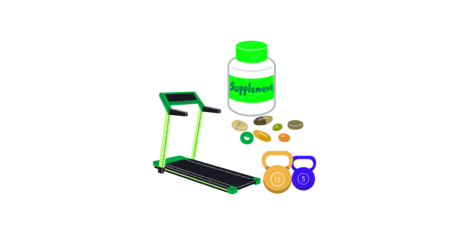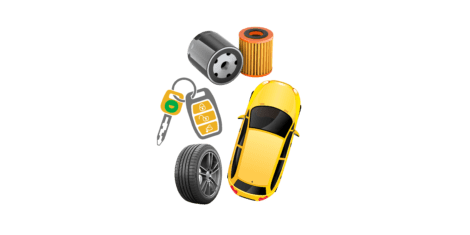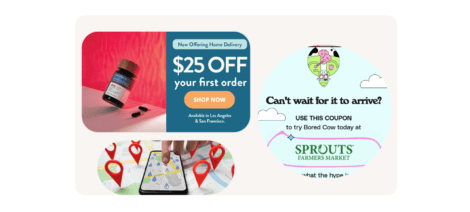As the famous line from Field of Dreams said, “If you build it, they will come.” Unfortunately, this line couldn’t be more false when it comes to ecommerce.
It falls on the digital marketer to drive traffic to an ecommerce store, and ultimately drive sales. This is where ecommerce marketing comes into play. Taking the ecommerce store you’ve built, driving traffic to it, and in the end, turning that traffic into sales.
In the coming article, we will dive into the definitions, similarities and differences of various ecommerce marketing strategies and tactics.
What is Ecommerce Marketing?
Ecommerce marketing is the practice of using a variety of tactics to build an audience and drive traffic to an online store in order to increase sales.
An effective ecommerce marketing strategy can increase brand awareness, customer loyalty and overall revenue.
What is Ecommerce Advertising?
Ecommerce advertising, also known as Pay Per Click (PPC) is the practice of creating and displaying paid content on another website.
These properties often include Google Search and Display Network, Facebook and other social media platforms, even television and radio.
This paid content allows you to reach a more specific audience that may not already be familiar with your brand.
Just like the name describes, these advertisements typically follow a Pay Per Click model, where the advertiser is charged for every click that their ad receives.
This Pay Per Click model makes targeting the right segments and creating advertisements that resonate with that audience imperative, as you will be paying for clicks whether or not those visitors become customers.
For a more in-depth look into PPC including strategies, tactics, and considerations, check out Wordstream’s PPC Guide.
What is Content Marketing?
According to Content Marketing Institute, the definition of content marketing is:
Content marketing is a strategic marketing approach focused on creating and distributing valuable, relevant, and consistent content to attract and retain a clearly defined audience and, ultimately, to drive profitable customer action.
Creating attractive and valuable content is a great way to stay at the front of your audience’s mind and reinforce authority in your space.
Not only is content marketing a great way to provide value to your customer base, it’s also a key element for Search Engine Optimization (SEO).
By creating valuable content that answers your customers’ questions, you can attract even more traffic through web searches and allow Google to accurately assess your relevance to a particular topic.
Check out Justuno’s guide on how to develop your ecommerce content marketing strategy for a deeper and more actionable look into the topic.
Ecommerce Blog
Every ecommerce store should have an on-site blog. There are many reasons for this but the top three are:
- Driving more qualified traffic to your store organically.
- Engaging your audience and brand your store as an authority in your space.
- Boosting conversions by establishing credibility and answering questions.
Most platforms and Content Management Systems (CMS) such as Shopify, WordPress and Webflow make it incredibly easy to add and maintain a blog on your site.
This free marketing channel will prove to be one of the most important additions to your site, and one of your store’s greatest “sales-people”. Blogs are a type of “owned media” which means it’s entirely under your brand’s control and is completely unique to you, making it an invaluable marketing resource.
For a closer look into why and how to run an effective ecommerce blog, check out OutBrain’s 10 Reasons Why Article.
Social Media Marketing
Social media marketing is a great channel to connect with your audience on and keep them up-to-date on your brand.
By publishing visually appealing content that follows a unique brand style, while staying engaged with the audience, marketers are able to build large followings that are consistently exposed to and interacting with your brand.
This strategy builds brand awareness and customer loyalty because people feel more connected with your brand, and can interact with it on a more personal level.
Buffer’s guide to social media marketing is a great resource for learning more about how to successfully leverage social media in business.
What is Email Marketing?
According to Neil Patel, email marketing can be defined as:
“A digital marketing strategy based on sending emails and developing relationships with prospects and customers. An effective email marketing strategy converts prospects into customers, and turns first time buyers into recurring customers”
A successful email marketing strategy is one that delivers valuable content to your email database.. This could be announcements, information about your process, products or services, links to articles, transactional information, videos, and more.
In general, your email newsletter should exist for the purpose of furthering your relationship with the (potential) customer.
The more personalized, and relevant your newsletter is to each recipient, the more likely they will be to click through to your website or offer and become a customer.
For an in-depth tutorial on email marketing, check out Respona’s Guide to Outreach Marketing.
What is Influencer / Affiliate Marketing?
Influencer marketing is a type of marketing that uses “influencers”, or social media users with a large following that are seen as experts in their niche, to endorse a product or promote a brand.
There are a few different ways to pay these social media users to market your products.
Typically, these influencers are given a discount code to distribute to their following. After someone has purchased a product using that code, the influencer would receive a percentage of the sale.
Similarly, affiliate marketing follows essentially the same model. The key difference is that an affiliate does not necessarily have to be a social media user or even an individual at all.
Many affiliate marketers are entire websites or companies running marketplace websites. They could be a blogger writing about a particular niche, or an entire ecommerce store.
Both of these channels are great ways to market your product with little to no effort on your end, while simply paying the affiliate or influencer a small cut of the sale.
Another plus to these channels is that influencers and affiliates often already have established audiences and can very easily introduce your brand to that audience. This is especially useful if you are just starting out and have not built a strong customer base.
Because these influencers and affiliates are seen as experts in their niche, their endorsement of your product often seems much more trustworthy than traditional marketing strategies.
What is User Generated Content (UGC)?
User Generated Content (UGC) is any content – articles, images, videos, posts, etc. that feature your brand or product that’s created by your end user. This is most commonly seen in the form of reviews, testimonials, social posts, etc.
UGC establishes trust, as it can be seen as almost a “vote of confidence” or some kind of up-vote since consumers are the ones creating it as opposed to content created by the brand itself.
By sharing and interacting with this content, you can take this trustworthiness and authority even further and establish an active and engaging community surrounding your brand.
What is Upselling?
Upselling is a sales technique where the seller attempts to persuade the buyer to purchase a more expensive, often higher-end version of the product that they were interested in.
This technique is common and incredibly useful for ecommerce stores, especially because the process can be automated and has a huge impact on average order value (AOV).
Using tools such as Justuno’s AI Powered Product Recommendation Engine, you can automate this upselling process in a way that refines itself as visitors interact with your store.
An important note is that the probability of selling to an existing customer is 60-70%, while the probability of selling to a new customer is 5-20%. (source)
That means it’s easier to upsell higher-end products to existing customers than it is to sell cheaper products to prospects.
But how do you convince someone to spend more money on a substitute item? Simply show customers the benefits to upgrading their purchase and focus on how that switch provides them more value in the long-run.
What is Cross-selling?
Similar to upselling, cross-selling is a technique where the seller attempts to persuade the buyer to purchase complimentary products along with the chosen product.
This technique is important because you are catching the customer at the buying / decision making stage, and recommending additional products.
Cross-selling, when done correctly, can be an incredibly useful technique to increase your Average Order Value (AOV), and increase overall store revenue.
Justuno’s Product Recommendation Engine mentioned above makes it easy and efficient to employ both upselling and cross-selling in an intelligent and ever-improving way.
What is the Difference Between Upselling and Cross-selling?
Many people get hung up with the similarities and differences between upselling and cross-selling. Both increase average order value by recommending products to customers but the strategy behind them is where they differ.
Upselling is when you recommend the customer buy a more expensive product instead of the chosen product.
Cross-selling is when you recommend the customer buy additional products along with the chosen product.
Both upselling and cross-selling are important strategies for any ecommerce store, and luckily, they are both easy to implement.
Check out Justuno’s Upsell & Cross-sell Video Walkthrough for more information on how to get started!
What are Flash Sales?
According to Active Campaign’s Flash Sale Guide, a flash sale can be defined as:
“When an online store offers substantial discounts or promotions for a very short period of time. The main goals of a flash sale strategy are to get online shoppers to impulse buy, to increase short-term sales, or to sell your surplus stock.”
As described above, the goal of a flash sale is to get customers to impulse buy. By creating a sense of urgency along with a substantial discount, marketers can effectively persuade customers to buy on the spot or risk losing out on a great deal.
While flash sales can be a great strategy to purge slow-moving inventory or increase short-term visibility, it is typically impractical to use for main or marginal products and if overused can lose it’s shock value.
What is Return On Ad Spend (ROAS)?
ROAS stands for return on ad spend and this metric measures the revenue earned for every dollar spent on paid advertising.
Very similar to return on investment (ROI), ROAS is used to specifically track the effectiveness of advertising campaigns, particularly pay per click campaigns.
How to Calculate Return On Ad Spend (ROAS)
Calculating return on ad spend is very simple. Just take the amount of money that your business earns for one conversion, and divide it by what you spent to acquire that customer
If you spent $20 in advertisements to make one sale of $100, then your ROAS would be $5. In other words, you made $5 for every dollar that you spent.
To learn how to maximize your ROAS, particularly when dealing with Google Ads, visit Wordstream’s Return On Ad Spend Guide.
What are Promotional Codes and How Are They Used?
A promotional code is simply a code made up of numbers and letters that, when used by a customer, functions as some sort of discount to their order.
These codes are often given to customers as a part of a larger promotional marketing strategy, and are typically embedded in pop-up offers.
This tactic is a great way to incentivize customers to buy, especially when paired with an exit offer. By pairing the two, marketers can create customers out of visitors who originally intended to leave the site without making a purchase.
What is an AI Product Recommendation Engine and how is it used?
An AI Product Recommendation Engine is an advanced on-site marketing tool, and one of the most effective ways to increase average order value (AOV).
This tool uses site data such as visitor behavior, previously viewed items, most viewed items and more to make intelligent upsell and cross-sell recommendations to customers.
The engine also uses filters to target more narrow audience segments and continuously improve the recommendations.
The AI Product Recommendation Engine can be summarized as the ultimate conversion rate optimization tool available to marketers and ecommerce stores.
For a more in-depth look into this advanced proprietary tool, and how you can begin using it in your store, check out Justuno’s AI Product Recommendation Engine.
Single Opt-In vs Double Opt-In
You may be wondering whether you should use single opt-ins or double opt-ins for your email pop-ups.
There are benefits to both with single opt-ins getting more subscribers in the moment while double opt-ins may collect more valuable subscribers in the long run.
What is single opt-in?
A single opt-in is when subscribers enter their information to join your email list once, and are immediately added to the list.
What is double opt-in?
Double opt-ins are when a subscriber enters their information first on the site, then are directed to their inbox to confirm their subscription again via a click or re-entering their email address.
What are the benefits of each?
The primary benefit of single opt-in is that you will receive more subscribers than you would if you mandated a double opt-in process. More steps = more opportunities for website visitors to fall off or get distracted.
One advantage of growing your list quickly with single opt-in is that you will be able to distribute your content to a larger audience right off the bat.
This can be useful especially if you are just starting out and/or don’t have a loyal audience built up yet.
The disadvantage of growing your list quickly is that your subscribers will not be as engaged. You will experience lower click through rates and fewer email subscribers that turn into customers.
On the other hand, when dealing with double opt-in, subscribers have to make the same “yes” decision twice, and that means there will always be a percentage that doesn’t follow through.
The advantage of this slower-growing email list is that the subscribers that did follow through are quite sure they want to receive your content.
You will experience higher click through rates, higher conversion rates, and overall higher engagement with your content.
Conclusion
At this point, you should have an extensive list of tactics for increasing conversions and revenue on your ecommerce store.
Using these tactics along with more advanced tools such as Justuno’s AI Product Recommendation Engine will create a complete ecommerce marketing strategy, optimized for the most conversions.
Check out more ecommerce and conversion rate optimization guides at Justuno’s Blog.


